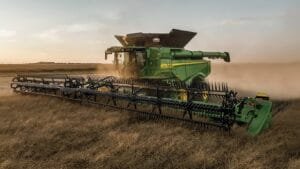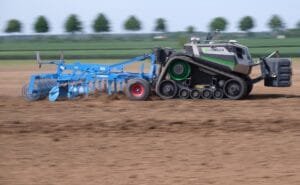A widespread GPS malfunction affecting John Deere tractors has created significant disruption in farming operations across multiple regions. The technical glitch, which impacts the automated guidance systems in these agricultural vehicles, has forced farmers to halt or adjust their field operations. This incident highlights the growing dependence on precision agriculture technology and raises questions about the vulnerability of modern farming systems to digital disruptions. A widespread GPS malfunction affecting John Deere agricultural equipment has caused significant disruption across multiple farming regions, leaving operators scrambling to maintain their precision farming operations. The technical glitch, which began affecting tractors equipped with John Deere’s StarFire navigation system, has resulted in numerous instances of autonomous tractors veering off course and creating irregular planting patterns.
Farmers in several states reported their equipment suddenly deviating from pre-programmed routes, with some machines entirely stopping or executing unexpected maneuvers in the middle of fields. The malfunction has especially impacted operations during the critical spring planting season, when precise row spacing and seed placement are essential for optimal crop yields.
The issue appears to stem from a software update that was automatically pushed to equipped vehicles, causing interference with the StarFire receiver’s ability to maintain accurate positioning data. This has compromised the automated steering systems that many modern farmers rely on for efficient field operations.
Technical experts have identified that the problem affects multiple tractor models manufactured between 2015 and 2023, specifically those utilizing the StarFire 6000 and 7000 series receivers.The malfunction has exposed the vulnerability of highly automated farming systems and their dependence on reliable GPS technology.
Several farming cooperatives have reported significant losses in productivity, with some operators forced to revert to manual steering methods. This temporary solution has resulted in slower operation speeds and increased fuel consumption, as well as potential errors in planting patterns that could affect harvest efficiency later in the season.
John Deere’s technical support teams have been working around the clock to address the situation,though the complexity of the GPS network and integrated systems has made finding an immediate solution challenging. The company has established a dedicated response team to handle the increasing number of support tickets from affected customers.
Agricultural technology experts emphasize that this incident highlights the importance of maintaining backup navigation systems and traditional farming skills, even in an era of advanced automation.Some farmers have implemented temporary workarounds by utilizing third-party GPS systems, though these solutions often lack the full integration capabilities of the original equipment.
The economic impact of the glitch extends beyond immediate operational disruptions, as delayed planting schedules could affect crop insurance deadlines and optimal growing windows.Industry analysts estimate that affected farms could face increased operating costs of up to 30% while managing the technical issues.
Local equipment dealers have reported a surge in service calls and requests for temporary replacement units, straining their ability to provide immediate assistance to all affected customers. This situation has sparked discussions about the need for more robust fail-safes in automated farming systems and the potential development of backup navigation protocols for critical agricultural operations.










